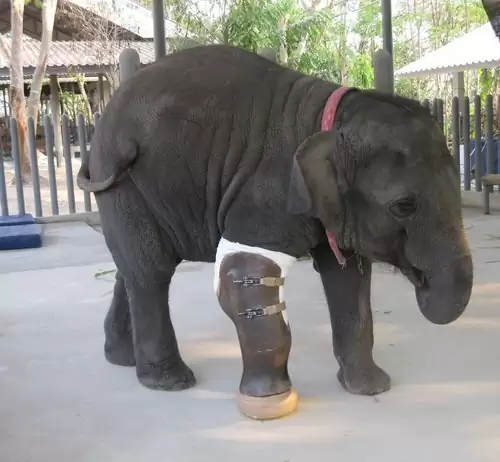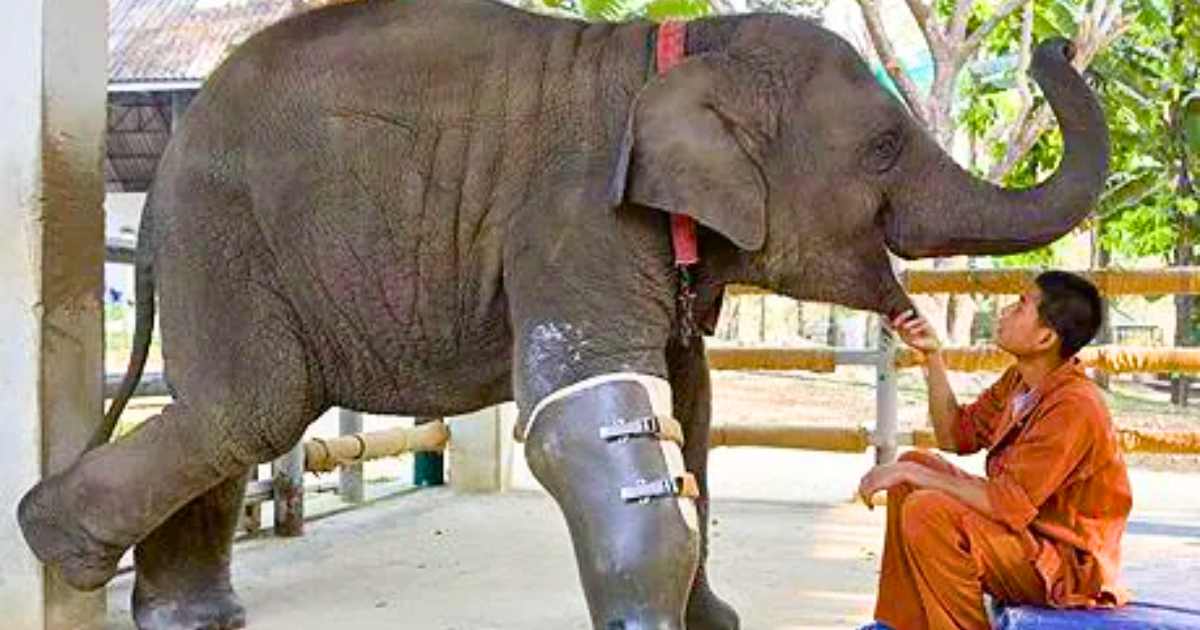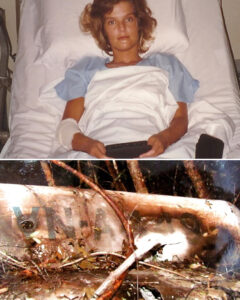In the world of wildlife, few stories capture the heart quite like Mosha’s. When this young elephant was just seven months old, tragedy struck in the forests near the Thailand–Myanmar border. She stepped on a landmine, losing her right foreleg in the explosion. For most animals, such an injury would be fatal. But Mosha’s journey turned into one of courage, compassion, and the extraordinary power of human–animal connection.
A Second Chance at Life
Mosha’s story changed the day she was brought to the Friends of the Asian Elephant Hospital in Thailand — the world’s first elephant hospital dedicated to rescue and rehabilitation. The staff refused to let her become another silent casualty of human conflict. Instead, they vowed to help her walk again.
Their mission wasn’t simple. Creating a prosthetic leg for a baby elephant that could eventually weigh several tons was a challenge that had never been fully solved before. But with persistence and innovation, Mosha received her first prosthetic leg in 2008. For the first time since the accident, she could stand tall again.
A Doctor’s Determination
Behind this miracle stood Dr. Therdchai Jivacate, a specialist in human prosthetics who turned his expertise toward helping animals. He believed Mosha’s will to live was just as strong as any person’s.
“When she cannot walk, she is going to die,” he once said — and that conviction drove him to keep designing new legs for her as she grew.
Like a hermit crab outgrowing its shell, Mosha’s ever-changing size means she needs a new prosthetic every few years. Each upgrade requires new materials, new weight calculations, and countless hours of fitting and testing. But every new version brings her closer to freedom.

Read More: Man Loses 360 Pounds Naturally — Internet Rallies to Support His Next Step
The Bond Between Nature and Innovation
Asian elephants are known for their intelligence and gentle nature. They can consume up to 330 pounds of vegetation a day and play a vital role in maintaining healthy forest ecosystems. Mosha’s survival isn’t just about one elephant — it’s a symbol of how compassion and technology can intersect to heal the wounds we’ve inflicted on nature.
Her story also raises deeper questions: How much do we owe the wild when human actions cause its suffering? Mosha’s prosthetic doesn’t erase the pain of her injury, but it does show that empathy can rebuild what conflict destroys.
Inspiring a New Generation of Wildlife Care
Mosha’s recovery has inspired veterinarians and engineers worldwide to rethink animal prosthetics. From dogs with 3D-printed limbs to dolphins with artificial tails, the wildlife rescue community is finding creative ways to give injured creatures a second chance. These innovations remind us that the line between human and animal resilience isn’t so wide after all.
The Friends of the Asian Elephant Hospital continues to care for Mosha and other elephants like her. They rely on donations, volunteer work, and a growing movement of people who believe that animals deserve dignity, no matter what they’ve endured.
Beyond Survival — A Story of Hope
Today, Mosha walks with confidence on her newest prosthetic leg — a blend of science, love, and perseverance. Watching her move again is a quiet reminder of what’s possible when compassion leads the way. She’s no longer a victim of war’s leftovers but a living testament to survival and care in the heart of nature.
In a world where human development often comes at the cost of the wild, Mosha’s journey offers a hopeful counterpoint. It’s proof that coexistence is possible — that healing, even across species, can be real.
Full Story: Science Confirms Kelly Brook’s Perfect Body — But the Real Message Is Bigger Than Beauty
Closing Thought
Every step Mosha takes reminds us that the future of wildlife depends on how we respond to its pain. When care replaces neglect, when innovation meets empathy — survival becomes more than luck. It becomes a shared victory between humans and the natural world.



